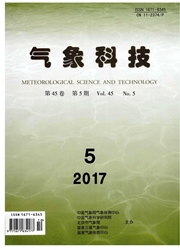

 中文摘要:
中文摘要:
“地形追随坐标系中气压梯度力误差的特征分析”一文通过几何分析和理想实验,对比了地形追随坐标系两种方案(经典方案和协变方案)中气压梯度力(PGF)误差的特征。结果表明:(1)经典方案的PGF误差受“垂直气压梯度”,“气压梯度的方向(α)”,“垂直层的坡度(φ)”三者影响,垂直气压梯度越大,气压梯度与水平方向的夹角越大,垂直层坡度越大,误差越大;(2)协变方案的PGF误差不受上述三因子影响。此外,通过定义参数TT(TT=tanφ·tanα)能定量分析经典方案的PGF误差。
 英文摘要:
英文摘要:
A terrain-following coordinate (a-coordinate) in which the computational form of pressure gradient force (PGF) is two-term (the so-called classic method) has significant PGF errors near steep terrain. Using the covariant equations of the a-coordinate to create a one-term PGF (the covariant method) can reduce the PGF errors. This study investigates the factors inducing the PGF errors of these two methods, through geometric analysis and idealized experiments. The geometric analysis first demonstrates that the terrain slope and the vertical pressure gradient can induce the PGF errors of the classic method, and then generalize the effect of the terrain slope to the effect of the slope of each vertical layer (φ). More importantly, a new factor, the direction of PGF (a), is proposed by the geometric analysis, and the effects of φ and a are quantified by tan φ.tan a. When tan φ.tan a is greater than 1/9 or smaller than -10/9, the two terms of PGF of the classic method are of the same order but opposite in sign, and then the PGF errors of the classic method are large. Finally, the effects of three factors on inducing the PGF errors of the classic method are validated by a series of idealized experiments using various terrain types and pressure fields. The experimental results also demonstrate that the PGF errors of the covariant method are affected little by the three factors.
 同期刊论文项目
同期刊论文项目
 同项目期刊论文
同项目期刊论文
 Spatial Distributions and Seasonal Variations of Tropospheric Water Vapor Content over the Tibetan P
Spatial Distributions and Seasonal Variations of Tropospheric Water Vapor Content over the Tibetan P Cloud microphysical budget associated with torrential rainfall during the landfall of severe tropica
Cloud microphysical budget associated with torrential rainfall during the landfall of severe tropica An orthogonal terrain-following coordinate and its preliminary tests using 2-D idealized advection e
An orthogonal terrain-following coordinate and its preliminary tests using 2-D idealized advection e An investigation into the relationship between liquid water content and cloud number concentration i
An investigation into the relationship between liquid water content and cloud number concentration i Effects of Vertical Wind Shear, Radiation, and Ice Clouds on Precipitation Distributions During a La
Effects of Vertical Wind Shear, Radiation, and Ice Clouds on Precipitation Distributions During a La 期刊信息
期刊信息
